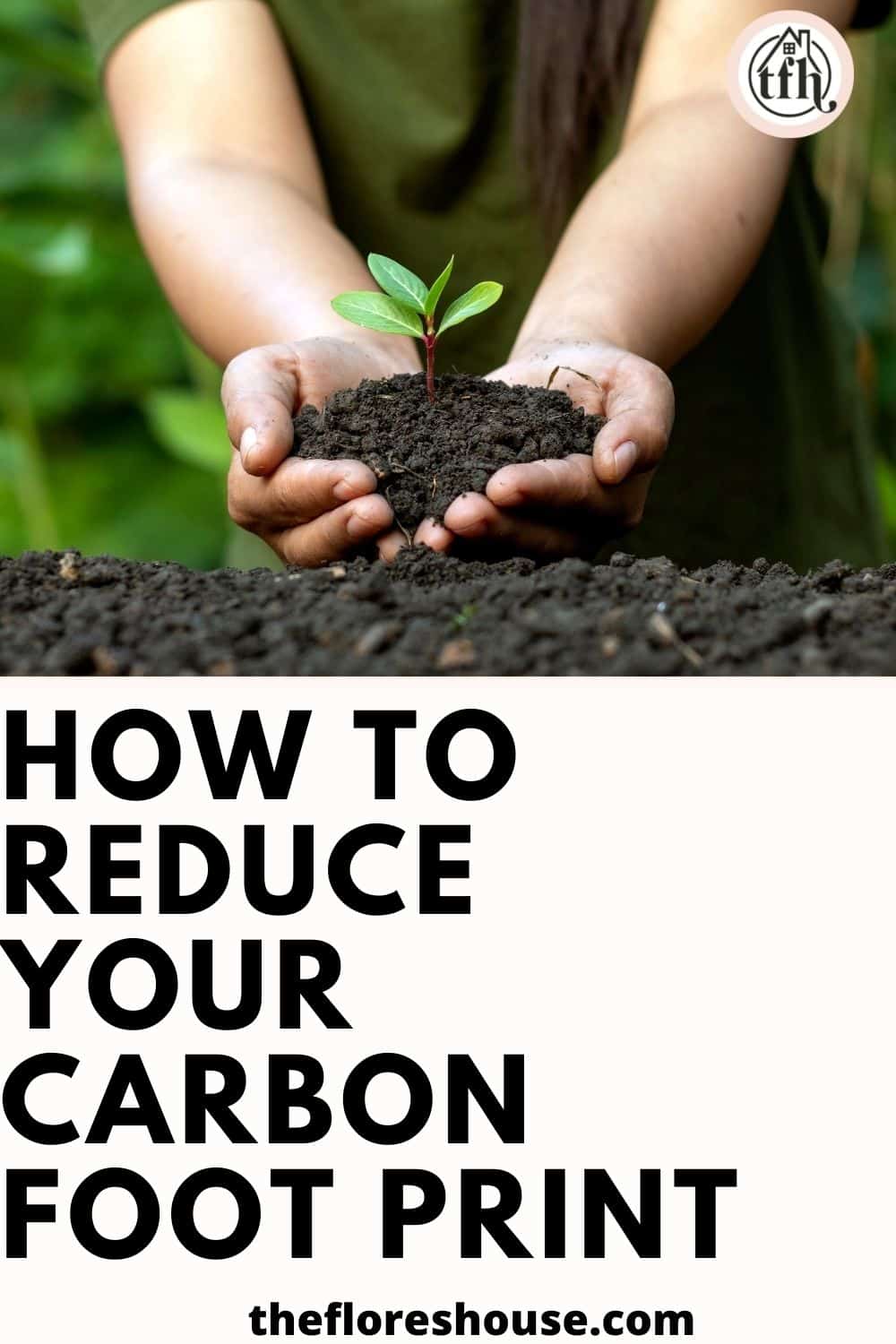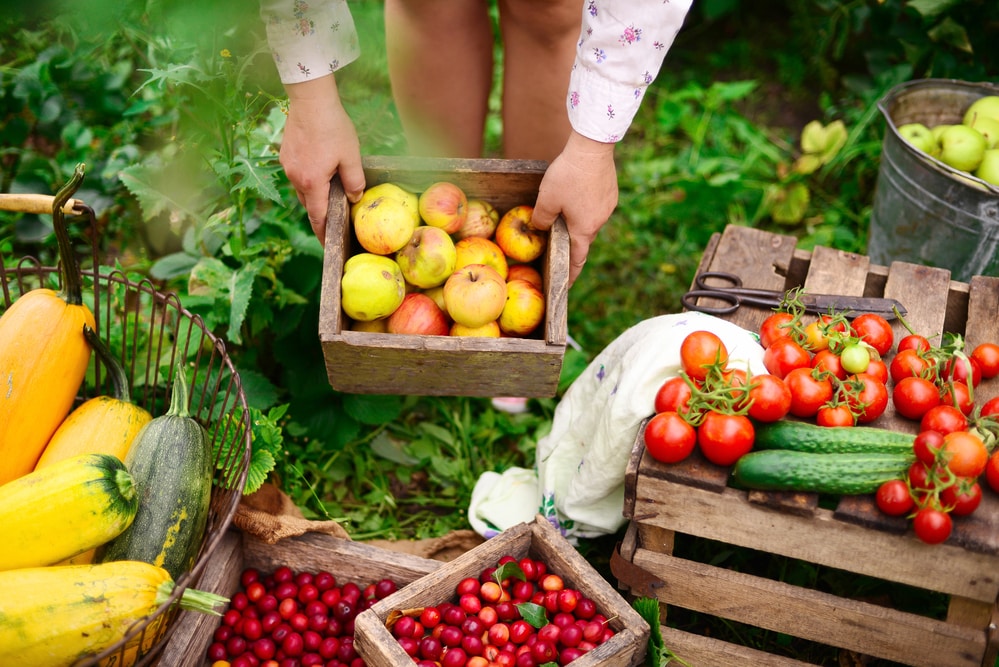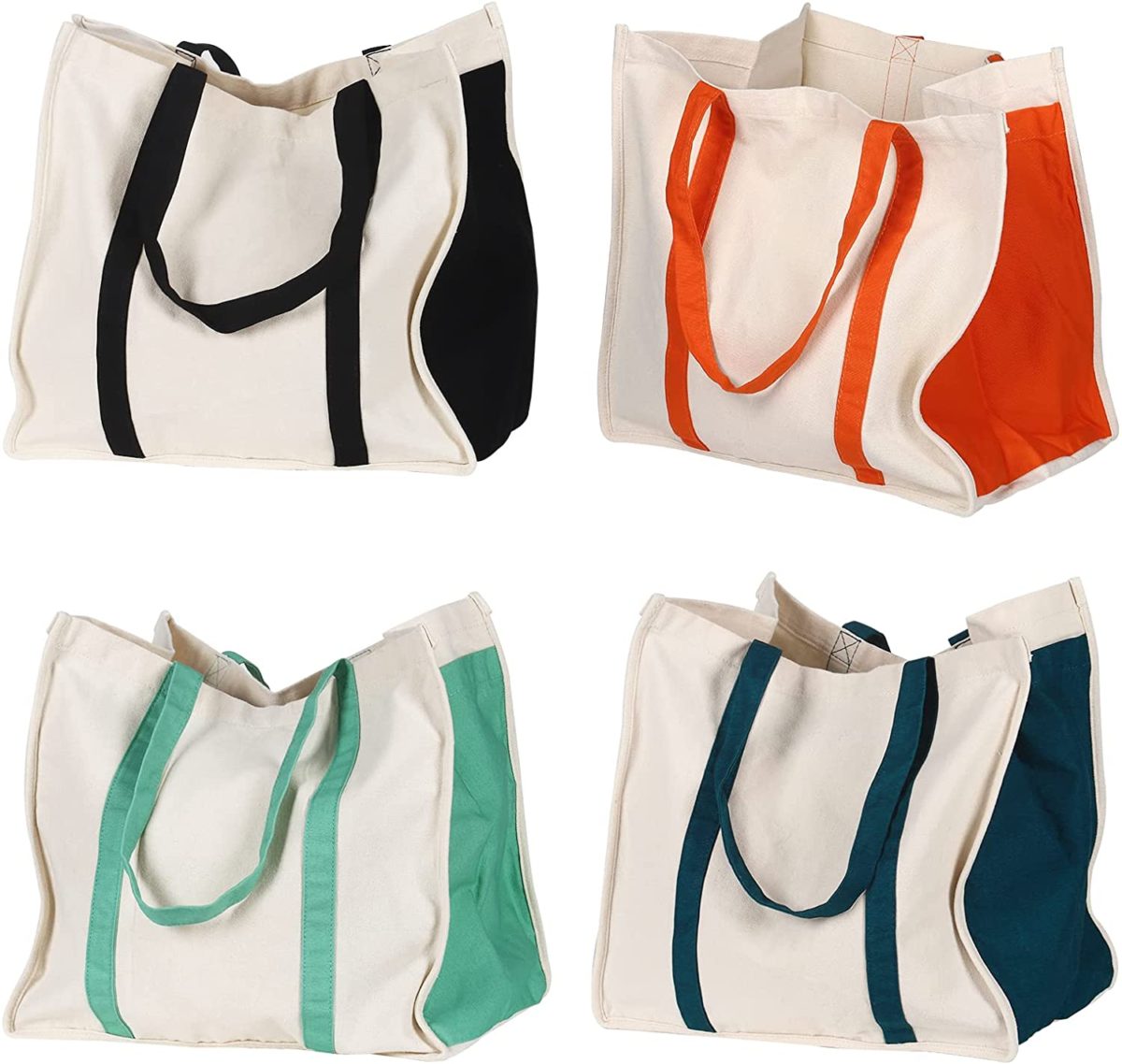A healthy planet means a healthy you! This handy cheat sheet outlines 14 simple ways to reduce your carbon footprint.
With the environment in constant peril, it’s crucial to do your part to reduce your daily carbon footprint. However, reducing emissions isn’t just good for the earth—it’s also good for your wallet! The good news is that making an environmentally friendly change can be easy and inexpensive. From eating more locally-grown food to switching to eco-friendly cleaning products, here are 14 easy ways to reduce your carbon footprint today.
This post is all about 14 easy habits that will help you reduce your carbon footprint.

This post may contain affiliate links, which means I can receive a commission from any purchase made from the links. I earn from purchases from Amazon links. See the disclosure policy here.
Footprint Freedom: 13 Habits for a Greener Lifestyle
One of the main ways you can help improve the world is by reducing your carbon footprint. A carbon footprint refers to the amount of carbon dioxide emitted into the environment due to human activities.
Approximately one-third of greenhouse gas emissions in the United States come from homes and offices, with home energy use being the most significant contributor.
While reducing carbon emissions may seem overwhelming, it’s much easier than you think if you take small steps toward reducing your carbon footprint daily.
Check out this free carbon footprint calculator, and read on for great tips!
Reduce Your Carbon Footprint at Home
Energy efficiency is your number one priority!
1. Turn off or unplug everything that is not in use.
You might not think about how much energy your fridge uses, but it’s responsible for 9% of an average home’s electricity usage.
Consider using surge protectors for other electrical appliances. This simple task will allow you to turn off many things at once. Make it a habit to do this anytime they are not in use.
2. Choose energy-efficient appliances.
You might not think about how much energy your fridge uses, but it’s responsible for 9% of an average home’s electricity usage.
So, selecting an ENERGY STAR®-rated model is a simple step to reduce your carbon footprint.
Not to mention, you could get a tax incentive for your efforts.
3. Also, consider installing solar panels.
4. Get a Tankless Water Heater
If you’re considering installing a new water heater, one good option to consider is getting a tankless water heater.
These devices use less energy than conventional heaters and help keep your home environmentally friendly.
Use as little energy from the grid as possible, and you will shrink your carbon footprint.

5. Keep the A/C and Heat on Energy-conserving Settings
Reducing your carbon footprint is essential and something that everyone can do. Luckily, it isn’t as complicated as you might think.
Turn down your thermostat in winter and increase it in summer to avoid wasting energy throughout the year. You will adapt!
For extra points, use a programmable thermostat to set temperatures based on the time of day.
Natural gas is more efficient at heating the home than electricity, and it’s crucial to find ways to conserve energy.
Consider solar panels like these (nothing beats a renewable resource like solar energy)! This drastically reduces the cost of heating and cooling your home.
6. Make Some of Your Products
If you’re looking for a straightforward way to reduce your carbon footprint, start making more things from scratch. By doing so, you eliminate one more thing that was packaged and shipped by someone else.
This will reduce plastic waste. Furthermore, you will know how it was made and what is in it!
A Few Things to Make Instead of Buy
- Household Cleaners
- Beeswax Wraps
- Candles
- Soaps, Lotions, Lip Balms
- Bread, Tortillas and Pasta
- Beverages
- Yogurt and Cheeses
- Pickles and Kombucha
- Cookies, Muffins, and Granola
- Plant or Nut Milk
7. Buy Almost Everything Second Hand or Thrifted
Do you need another sweater, pair of jeans, or furniture for your apartment? Probably not.
Get your fix at thrift stores. This keeps fast fashion out of the landfill a little while longer. Also, if we buy fewer things new, the demand decreases, and fewer things will be produced over time.
Bonus points for buying eco-friendly goods (organic cotton, bamboo, wool)!
Buying almost everything second-hand is an easy way to reduce greenhouse emissions. Moreover, you will save a ton of money. Did I mention that finding something fabulous at a thrift store is FUN?
When you look for eco-friendly items in shops, beware of greenwashing! Click to learn more.
You can have fun with it, and once you are finished, you can resell or donate the items. Thrifting is a great way to live a sustainable lifestyle!

8. Buy Local
Staying local helps reduce your carbon footprint because you’re not shipping your produce across an ocean. It reduces greenhouse gases from food production. And it is excellent for zero-waste and low-waste lifestyles.
Local shopping helps support local farmers and economies by lowering global demand for cheap fuel.
Even if you can’t find a farmer’s market or local grocery store near you, you can still create a more environmentally friendly diet.
Shop for foods that are in season. More importantly, these foods tend to be fresher and taste better anyway.
Going local is a great way to reduce your carbon footprint and save money. Buying locally eliminates transportation costs and supports a local small business owner.
Support your community and lessen your impact on our planet!

9. Grow Your Own Food
To reduce our environmental impact and support local ecosystems, growing your own food is a natural extension of the “buy local” philosophy. When you cultivate fruits, vegetables, and herbs in your own garden, you’re taking a significant step towards sustainability and self-sufficiency.
Not only does this practice minimize the need for transportation and packaging, but it also ensures you have access to the freshest and most nutritious produce possible.
Starting a garden to grow your own food connects you more deeply to the cycles of nature. You become attuned to the seasons, understanding the best times to plant and harvest. This enhances your diet with seasonal varieties at their peak of flavor and nutrition and encourages a closer relationship with the environment around you.
Gardening teaches patience, care, and respect for the land, providing invaluable lessons in environmental stewardship.
Moreover, cultivating your own food can be incredibly rewarding, both physically and mentally. There’s a unique satisfaction in eating a meal that includes ingredients you’ve grown yourself from the toil of your own hands.
It’s a tangible connection to the earth, a daily reminder of the beauty of growth and renewal. By integrating this practice into your lifestyle, you support your health and well-being and contribute to a more sustainable and resilient local food system.
Embrace the joy and abundance of growing your own food, and let it be a cornerstone of your commitment to a greener, more self-sufficient life.
10. Use Reusable Bags
Grocery bags are one of the easiest ways to reduce your carbon footprint drastically. Unfortunately, the average U.S. citizen uses hundreds of plastic bags yearly, most of which end up in landfills or as litter.
By switching to reusable bags (even just a few will make a difference), you’ll reduce your carbon footprint and help save endangered sea turtles and other marine animals that mistake plastics for food.
You might not think your plastic bags are that big of a deal, but 12 million barrels of oil are required each year to produce plastic bags for American consumers.
Another byproduct of making these bags is carbon dioxide (CO2), which contributes to climate change. If you carry reusable bags when you shop for groceries or run errands, you’ll reduce your consumption of non-renewable resources and your carbon footprint in one fell swoop.

How We Choose to Live Affects the Planet
11. Walk or Bike Instead of Drive
Cars can emit harmful gases into our atmosphere, so reducing your driving whenever possible is good.
Try carpooling or taking public transportation if you can, and if you do need a car, drive with it as little as possible.
When you have no choice but to drive, try to get there on foot. Walking is better for your health and your carbon footprint. Plus, as a bonus, it will also help you burn off some of those calories!
Aim to drive less. Run all your errands in one day, shop closer, and work from home when possible.
Use a vehicle with better fuel economy and bonus points if it is an electric vehicle (EV) or hybrid!
You know that old saying, Two heads are better than one? Well, it works with cars, too.
Share a ride with coworkers or family members, and you can shave tons of money off your monthly fuel bill. After all, who doesn’t want their carbon footprint to be smaller?
12. Recycle More to Reduce Your Carbon Footprint
It may not sound like much, but recycling plastic, paper, and glass helps save energy. For example, recycling one glass bottle saves enough power to light a 60-watt bulb for four hours.
Energy-efficient light bulbs are another way to help reduce your carbon footprint. If you already recycle at home, consider recycling more – such as used motor oil, batteries, and old electronics.
13. Buy Products in Glass or Aluminum Instead of Plastics
We are at a critical time in history. Plastic garbage is ruining life across the planet. Now more than ever, we should avoid buying anything in plastic as much as we can.
Anything you buy packaged in plastic contributes to your carbon footprint—whether it’s biodegradable or recyclable.
Change your shopping habits to reduce your environmental impact. Look for items packaged in glass or aluminum instead of plastic, especially when buying food and cleaning products.
Read Next: Tips for Plastic-Free Grocery Shopping

14. Reduce Your Carbon Footprint with Practice Practical Minimalism
No, I am not talking about the trendy aesthetic! Yes, it is pleasing to the eye, but that is not the point.
A great way to reduce your carbon footprint is through minimalism.
Minimalism involves minimizing possessions, time commitments, and the environmental impact of your day-to-day activities.
With minimalism, you decide what is essential for your life and reject excesses. As a result, minimalist living provides peace of mind and helps you go green.
Do you have any others that we didn’t mention? Be sure to share with us in a comment below. We’d love to hear from you! Each idea will help improve your impact on the earth – and our planet needs all the help it can get! What was your favorite way?
This post was all about 14 easy ways to reduce your carbon footprint without too much trouble.




